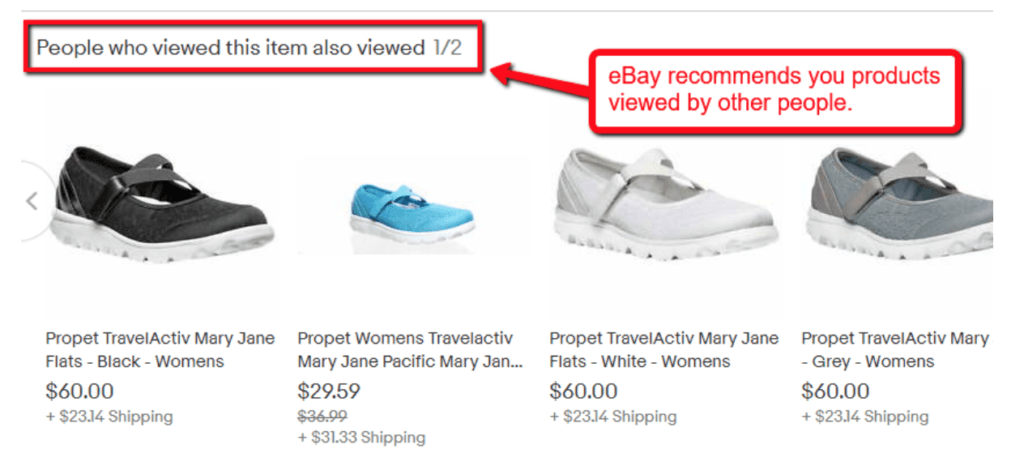Business
How AI can revolutionize your business
Artificial intelligence has exceeded imaginations about what it can do for businesses. It can personalize your brand and enhance customer satisfaction, leading to profitable campaigns and game-changing competitive advantages on your end. One example is Amazon, which took the word “shopping” to the next level through their deep learning algorithms, sensor fusion, and computer vision.

If you’ve been spending quite some time online recently, then you’d have probably noticed all the rave about how businesses are keen on integrating artificial intelligence (AI) into their operations.
Rightly so.
After all, the mindblowing capabilities and advanced functionalities that AI wields has forever revolutionized and improved how businesses turn in profits.
If you haven’t jumped into the AI bandwagon yet and are still wondering if it can REALLY make that much of a difference in your business, then you need to continue reading.
We will look into how AI has helped several companies revolutionize how they run their business.
Visual search
Have you ever wished you could search for items by how they look because you forgot or didn’t know what they’re called?
If you have, then your wish is granted — thanks to AI’s deep-learning technology.
Through visual search solutions by tools like Visenze, it has become dead easy to find items based on how they look, even if you don’t know what they’re called.

Upload a photo showing the pieces you want to find, such as a black fit-and-flare skirt, and the tool runs a search.
Visenze then shows items closely resembling the photo.
When customers have no trouble finding items in your online store, they’re more likely to continue with their purchase.
Adding the visual search functionality in your business, therefore, helps you boost your sales and conversions.
Personalized recommendations
When you see product recommendations that are pretty much your type — or one that fits the description of what you’re looking for — wouldn’t you be enticed to give in and give the product a closer look?
That’s how your customers feel, too. That is why you need to up your game when showing them your product recommendations.
The fantastic thing is, with AI, your product recommendations don’t have to be random. They are custom-fitted to your customers’ interests through machine learning, a subset of AI.
Here’s an example by eBay.

Fueled by the data they’ve garnered from their customers, eBay’s AI takes note of the features of the item their customers clicked; like the product’s size, material, style, and others.
It then leverages social proof (among other things) as it shows you similar items that your fellow shoppers also looked at.
The result is that you are more likely to add items to your virtual cart and check out.
The concept sounds simple, right?
The good news is, you can learn to develop an AI-powered strategy (like personalized recommendations) by pursuing AI training through online courses.
From the myriad of online courses available, you can learn various AI techniques and tools that you can apply to your business.
Once you’ve learned enough about how AI works, you can now include your learnings about the technology when setting up the foundations of an effective marketing strategy for your business.
You can use AI to learn more about your customers, the needs you need to fill, the best methods to engage them, etc.
Virtual reality shopping
Let’s say your customers bought a new house, and they’re now looking to purchase new furniture for it.
Traditionally, they’d have to go back and forth from the store, check out the pieces of furniture, and visualize the space the furniture takes up versus the space you allotted for it.
As you can probably imagine, the last bit is quite risky since your customers aren’t certain about whether or not the new furniture fits, despite them making an estimate.
This, of course, will keep them from pushing through with the purchase.
That’s where virtual reality shopping comes in.
It removes your customers’ doubts since they can see immediately how the furniture looks and fits in their house.
Google and Lowe’s Innovation Labs, for example, developed such a solution for home improvement shoppers.

Their geolocation and 3D technology and spatial memory, among others, allows you to hold up your phone, select from the store items, and virtually see how they look like in your house.
After selecting, you can create your shopping list and go to the store with the app directing you toward the item’s location.

Such a user-intuitive shopping experience that offers accuracy and convenience can have your customers patronizing your store and products.
Bonus tip: from online stores to brick-and-mortar
Supposing your e-commerce store expanded and you’ve decided to open up a brick-and-mortar store.
AI can still help you even in running your physical store.
One way is by giving your customers unique walk-out shopping experience.
Walk-out shopping experience
Can you imagine doing your grocery shopping without enduring long queues at the cashier or even paying on-site?
If not, start imagining it now because Amazon Go has made it a reality with their “walk-out technology.”
Amazon took the word “shopping” to the next level with this technology.
Open the Amazon Go app, scan the QR code as you enter the store, and pick your groceries.
Through their deep learning algorithms, sensor fusion, and computer vision, Amazon Go accurately detects the items you took from the shelves.
Even if you’re unsure of an item you already took out, you can return it. The app detects that motion and takes it off your virtual grocery cart.

After shopping, you can confidently walk out of the store. Amazon Go automatically charges your bill to your Amazon account.

With a queue-free and no-checkout experience like this, machine learning makes the shopping experience of your customers more seamless.
Bottom line
AI has exceeded imaginations about what it can do for businesses.
It can personalize your brand, enhance customer satisfaction, etc., leading to profitable campaigns and game-changing competitive advantages on your end.
If you found value from this post, please take three seconds of your time to share this article. Cheers!
(Featured image by DepositPhotos)
—
DISCLAIMER: This article expresses my own ideas and opinions. Any information I have shared are from sources that I believe to be reliable and accurate. I did not receive any financial compensation for writing this post, nor do I own any shares in any company I’ve mentioned. I encourage any reader to do their own diligent research first before making any investment decisions.

-

 Markets1 week ago
Markets1 week agoSugar Markets Cautious Amid Surplus Outlook and Steady Demand
-

 Crypto3 days ago
Crypto3 days agoEthereum Momentum Builds as Bitcoin Rallies and Trilemma Claims Emerge
-

 Crowdfunding1 week ago
Crowdfunding1 week agoCrowdfunding Grants Open for Business Projects Until January 2026
-

 Biotech2 days ago
Biotech2 days agoHaptena Therapeutics Launches with €3 Million Funding to Target KRAS-Mutated Tumors

























